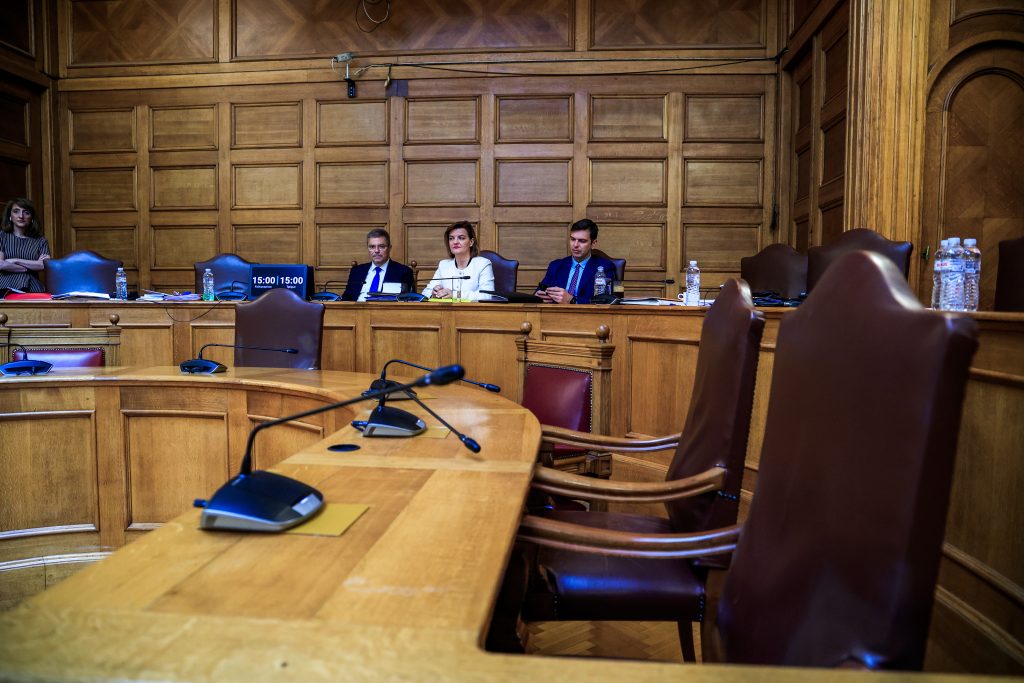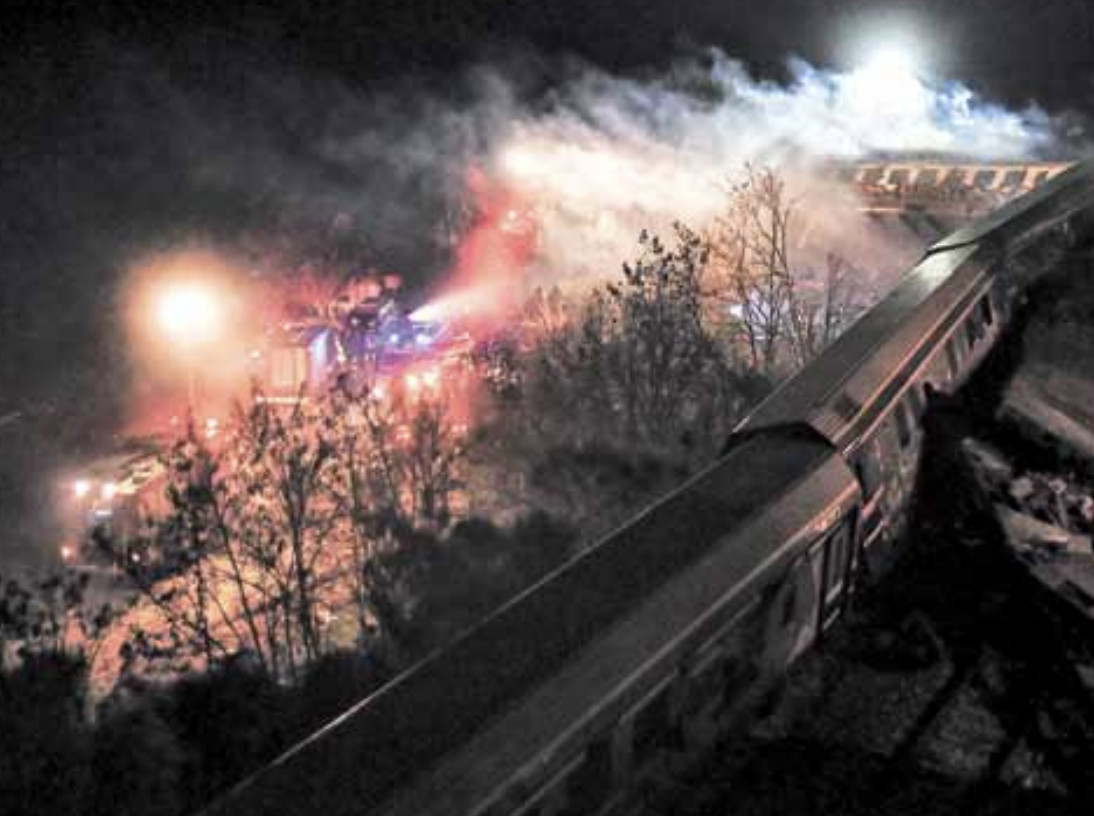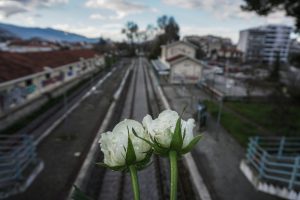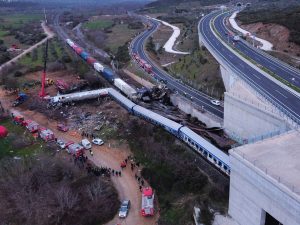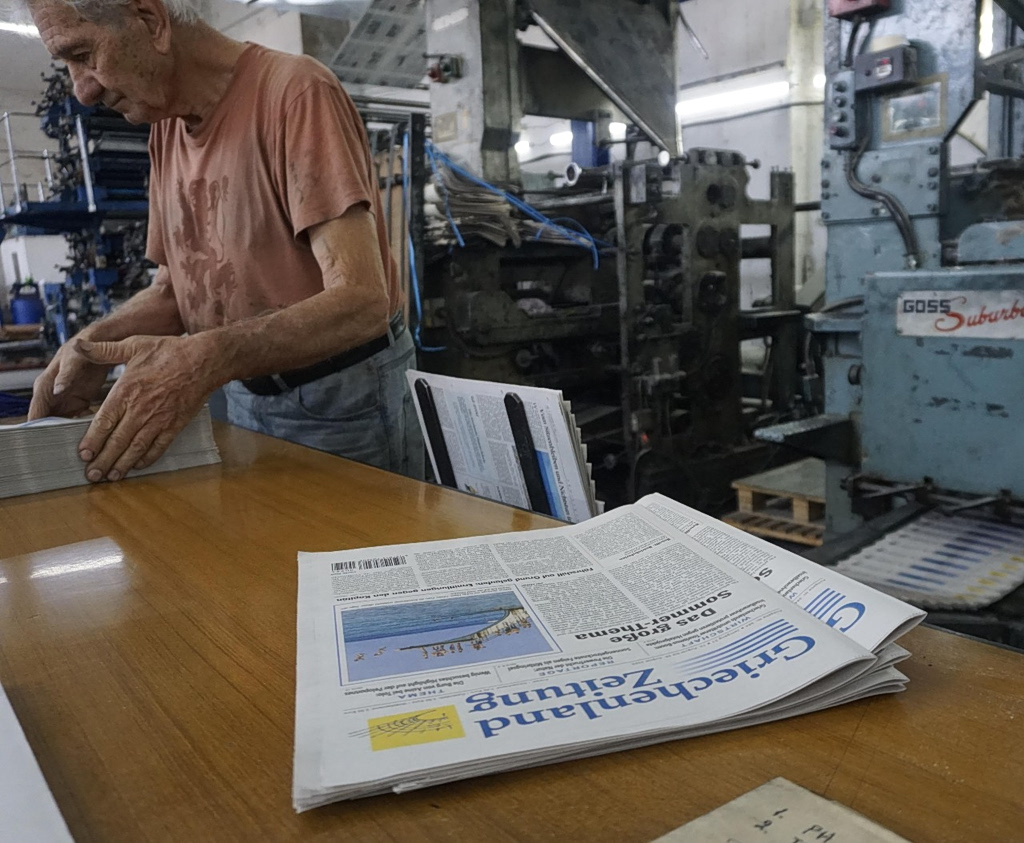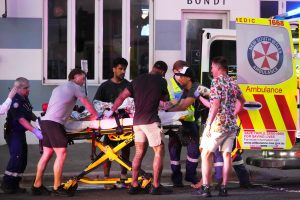Three videos showing an ill-fated south-bound freight train travelling through a rail tunnel shortly before it collided with a passenger train on the evening of Feb. 28, 2023 – the deadly Tempi disaster – have been ruled as authentic.
The video footage was only presented to authorities last month by the attorney representing the security company contracted by state-run Hellenic Railways Organization (OSE) — two years after the freight train slammed into the north-bound passenger train, a collision that claimed the lives of 57 people. Both trains were operated by private Hellenic Rail, with the state entity managing the rail network.
According to Greek Police’s (EL.AS) crime lab on Friday, the video footage is authentic and unadulterated. As a result, the footage will most definitely be included in the case file of a very high-profile judicial investigation into the crash. At first glance, nothing out of the ordinary appears to be carried on the three open carriages behind the freight train’s locomotives. Subsequent carriages carry shipping containers.
Three separate Tempi videos were presented by attorney Vassilis Kapernaros on Feb. 5, 2025, on behalf of his client, the security firm Interstar, albeit with the two-year delay.
The footage from the Tempi videos is deemed as imperative in addressing the most explosive and tendentious assertion that has arisen over the past two years to explain the eruption of a fireball that was seen in a few seconds of grainy footage a split second after the collision, namely, that the freight train was transporting an undeclared flammable substance.
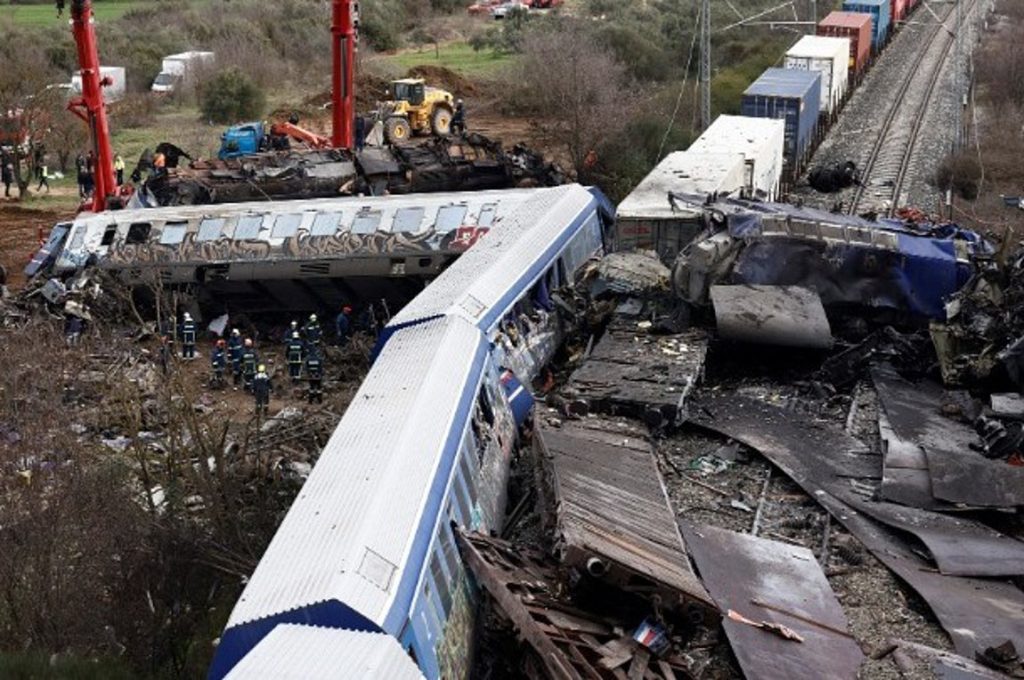
The “flammable substance” element is the “linchpin” in a “cover-up” scenario, something repeatedly alluded to by the political opposition in the country, by some of the family members of the crash victims, and amid intense speculation on social media.
Massive protests took place in various Greek cities – with rallies in foreign cities, too – on the two-year anniversary of the Tempi collision last month to demand a full investigation and accountability over the deadly accident. The deadly accident has decidedly dented voters’ approval for the center-right Mitsotakis government, although polls also show that the opposition has failed to capitalize and, in fact, is seen as “instrumentalizing” the tragedy, opinion poll results show.
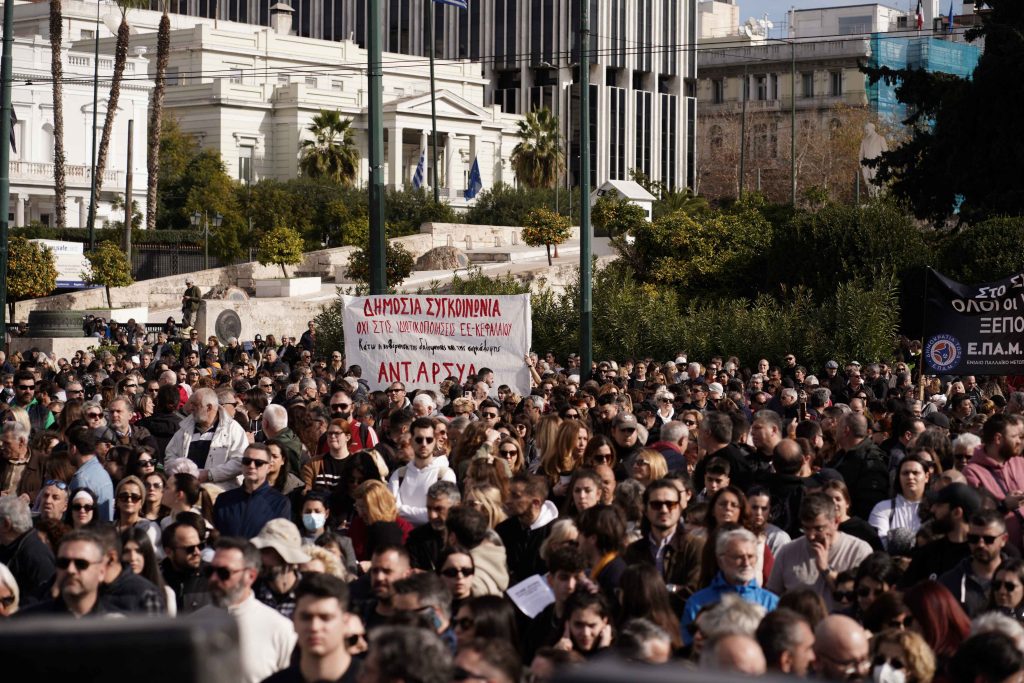
Public anger and sorrow over the accident has been magnified due to the fact that many of the victims were young college students returning to their studies in the northern city of Thessaloniki. The catastrophic mistake of putting two trains on the same track in the 21st century in a European country has also enraged public opinion. The initial assessment has pointed to human error, with several OSE employees arraigned, charged and held for several months in pre-trial detention pending an upcoming trial.
The assertion is that the freight train was illegally transporting a flammable cargo, which was then narrowed down to “solvents” and then pinpointed as xylene, ostensibly to adulterate fuels sold at the gas pump in order to cheat motorists. The same assertion, i.e. a cover-up of the illegal cargo transport, was then extended to the frantic and often haphazard rescue and cleanup operation in immediate aftermath of the crash. Critics, some family members and political opponents of the Mitsotakis government claim that an order to flatten and pour gravel onto one side of the railways line (the west side) was intentionally done to destroy evidence of an ignited flammable cargo carried by the freight train, which purportedly caused the incineration and asphyxiation of passengers and crew on the opposite train. Other detractors have maintained that even if not intentionally done to destroy evidence, including possible human remains, the actions breached standard accident scene protocols.
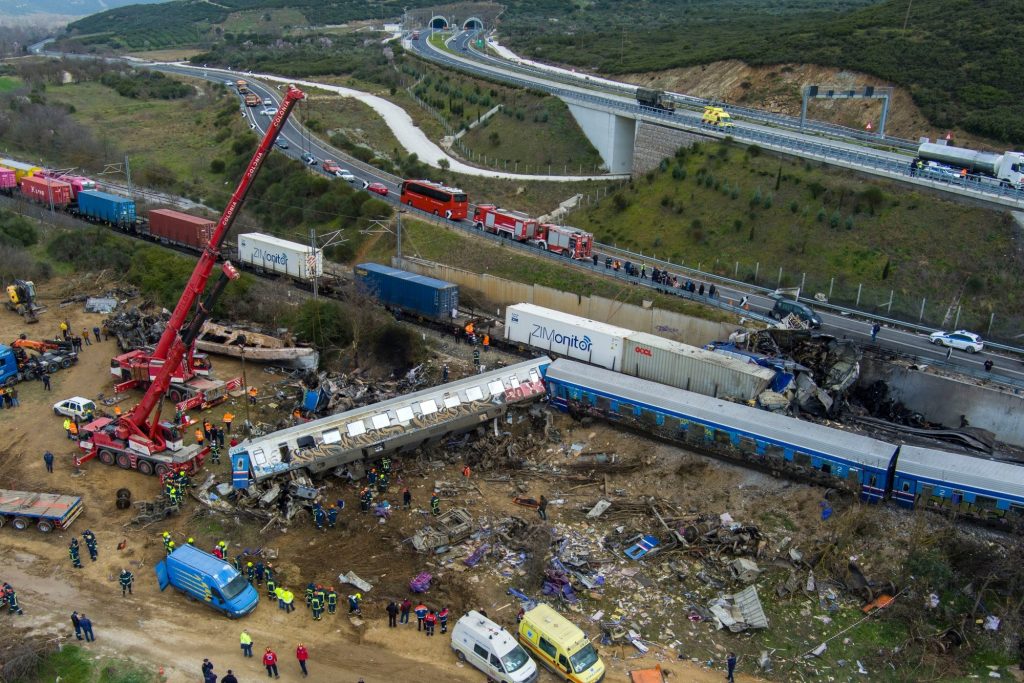
A separate probe commissioned by Hellenic Train has blamed the fireball on cooling fluids igniting and burning near or beneath an electrical transformer on the front carriage of the passenger train. An exhaustive investigation by a newly activated national disaster agency also provided significant input.
On its part, the government and first responders have countered that the rail accident was unprecedented by Greek standards and that haste trumped caution in the hours after the crash, whereby huge cranes had to be immediately and safely set up by the side of the tracks in order to lift and remove the mangled locomotives and rail carriages.
According to the crime lab, all three Tempi videos – from three separate cameras in a rail tunnel – are time stamped and coded, with the footage’s streaming to specific digital recorders also verified.
